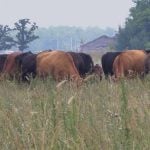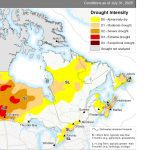It is often cheaper for producers in drought areas to ship cows to feed than to move feed to cows, says Bob Wolfe, a Saskatchewan Agriculture farm management agrologist.
The challenge is to find a custom-wintering feeder who can put together rations at a significantly lower cost than that of buying high-quality feed with relatively high freight costs.
“With high freight costs, it is generally not profitable to move lower quality feeds very far,” he said.
“It can be more economical to move the cows to these feeds. These lower-cost rations could include straw and screenings which, with the help of a livestock agrologist, can be balanced with other feed to provide good nutrition for a beef cow.”
Read Also

Alberta eases water access for riparian restoration
Alberta government removes requirement for temporary diversion licence to water plants up to 100 cubic metres per day for smaller riparian restoration projects
Producers negotiating with a custom feeder should ask a vet or rural service centre about the feeder’s experience and reputation.
“You have to have confidence in the skills and ability of the custom feeder to put together good rations.”
Those offering custom-wintering must also take care, especially with the bottom line. Wolfe said they should see the cows before agreeing on a price, or specify a body condition of three or better, because cows in poor condition will cost more to feed.
“If they don’t have good cost-of-production records, they should also consult with a livestock agrologist before offering a quote to perspective clients.
“They have to cover feed costs, but they also have to factor in equipment, labour – including manure removal in the spring – and a margin that takes into consideration the uncertainties of weather.”
Terms of the agreement can take many forms, from the livestock producer paying with a percentage of the calf crop to, most commonly, paying for the feed plus a daily fee. Terms should be negotiated and set in a written and signed agreement.
















